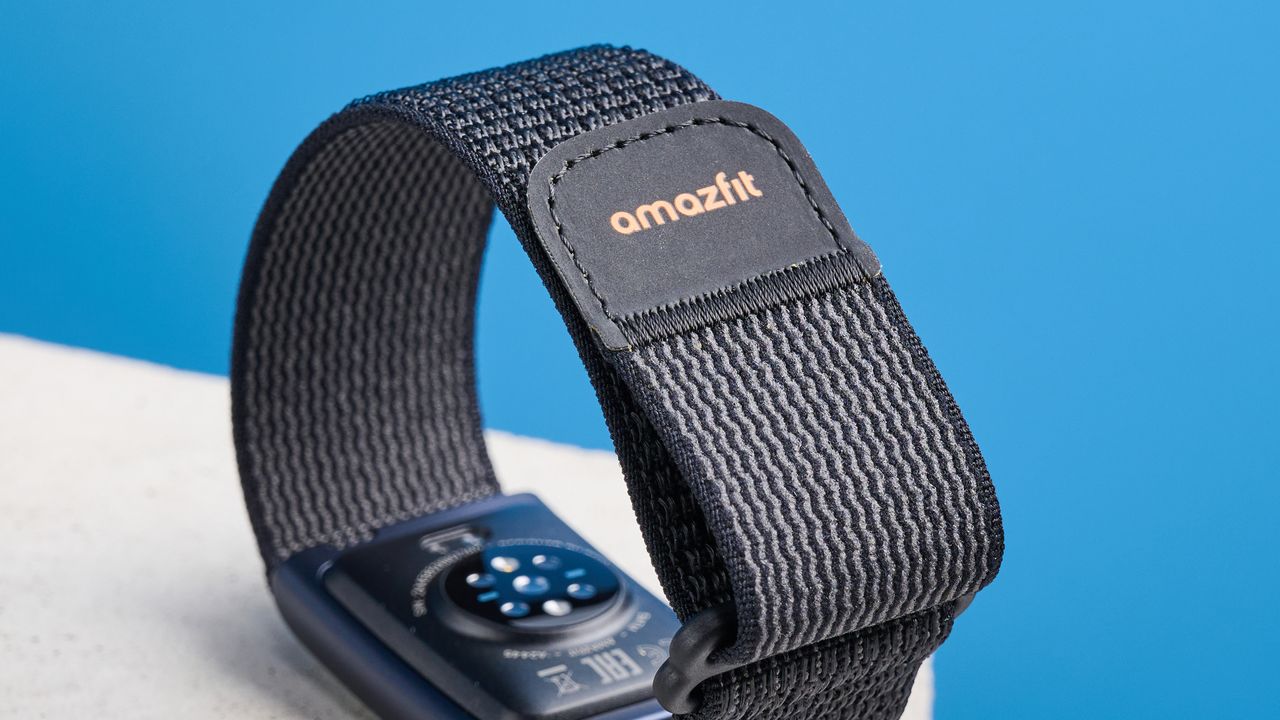
Many of the best fitness trackers are expensive. Some premium watches go up to $800 and beyond. But not Amazfit, and that’s one of the reasons why I adore Amazfit’s fitness trackers so much.
When Amazfit announced the Helio Strap earlier this year (2025), I was super excited to test it out. I’ve been using it for the past three weeks (I’m even wearing it as I write this), and I’m so impressed.
The Helio Strap is a Whoop competitor, which means it has no screen and is basically just a fabric band that tracks everything you could ever want. Sleep, activity, exertion, fatigue, recovery, and more. I’ll discuss everything in full in this Amazfit Helio Strap review.
Amazfit Helio Strap: Cheat sheet
- What is it? A screen-free fitness tracker from budget wearable giant Amazfit
- What does it cost? Just $99 / £99, and no subscription fee
- Who is it for? If you’re just getting into fitness, or you don’t want to pay a subscription fee for more premium alternatives
- What do we like? Well, the price, obviously, and also the huge variety of metrics in-app
- What are its weaknesses? The automatic workout detection is unreliable
Amazfit Helio Strap review: Specs
Price |
|
Colors |
Black |
Size |
6.7 x 3.5 x 1.4 inches |
Weight |
0.6 ounces |
Battery life |
10 days |
Charging time |
Under 2 hours |
Connectivity |
Bluetooth |
Durability |
5ATM (water-resistant up to 50 meters) |
Amazfit Helio Strap review: Price & availability
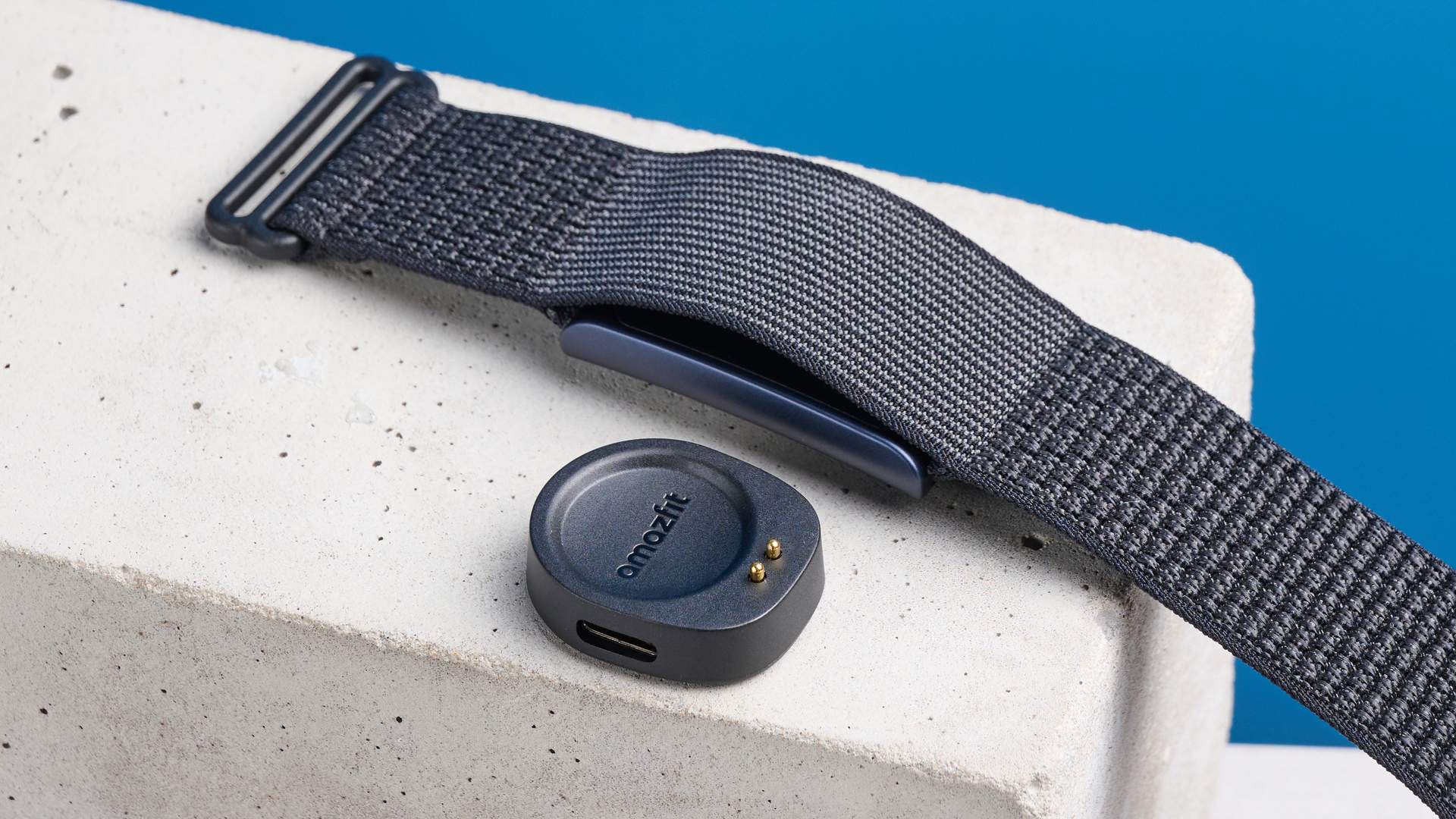
As with other Amazfit products I’ve reviewed, the Helio Strap is incredibly well-priced. The Helio Strap is available for just $99 from Amazon U.S. and £99 from Amazon U.K..
Like other Amazfit products, the Helio Strap is a cheaper dupe of a premium fitness tracker: the Whoop. At just $99, the Helio Strap is markedly more affordable than Whoop. The Helio strap is about 70% cheaper than Whoop and can do almost everything you’ll find on Whoop.
If you’ve never heard of Whoop before, let me give you a quick background. Whoop is, without a doubt, the Helio Strap’s source of inspiration.
Whoop is a screen-free fitness tracker. There are multiple versions with the same wearable: the Whoop 5.0, which has three tiers of subscription: Whoop One ($199), Whoop Peak ($239), and Whoop Life ($359). The Whoop Life has a built-in ECG, which is majorly impressive.
However, all of those prices aren’t one-time purchases: they’re yearly subscriptions. So you could buy two Helio Straps for one year of the Whoop One. You could buy 2 ½ Helio Straps for one year of the Whoop Life, so on and so forth.
Obviously, the Helio Strap isn’t capable of everything the Whoop is, but at this price, I think that’s reasonable. I’ll go into more depth throughout this review.
Amazfit Helio Strap review: Design
As you might have noticed from the photographs, the Helio Strap is, at first glance, nothing more than a fabric band. This is one of the most unique fitness trackers on the market, as most are adorned with glass screens that beep and buzz every time you receive a text message.
The Helio Strap is really comfortable. I’ve seen online reviews criticizing the strap for being too tight, but I didn’t experience that at all. Whenever I felt the strap was too tight, I merely loosened it. My wrist circumference is 5 ½ inches. The Helio Strap fits my boyfriend’s wrist, too: his wrist circumference is 7 inches.
The actual fitness tracker is 1.4 inches long, which is the entire width of my wrist. Even so, I found wearing the tracker very comfortable. It has a hook and look clasp, so it can be adjusted for any wrist size.
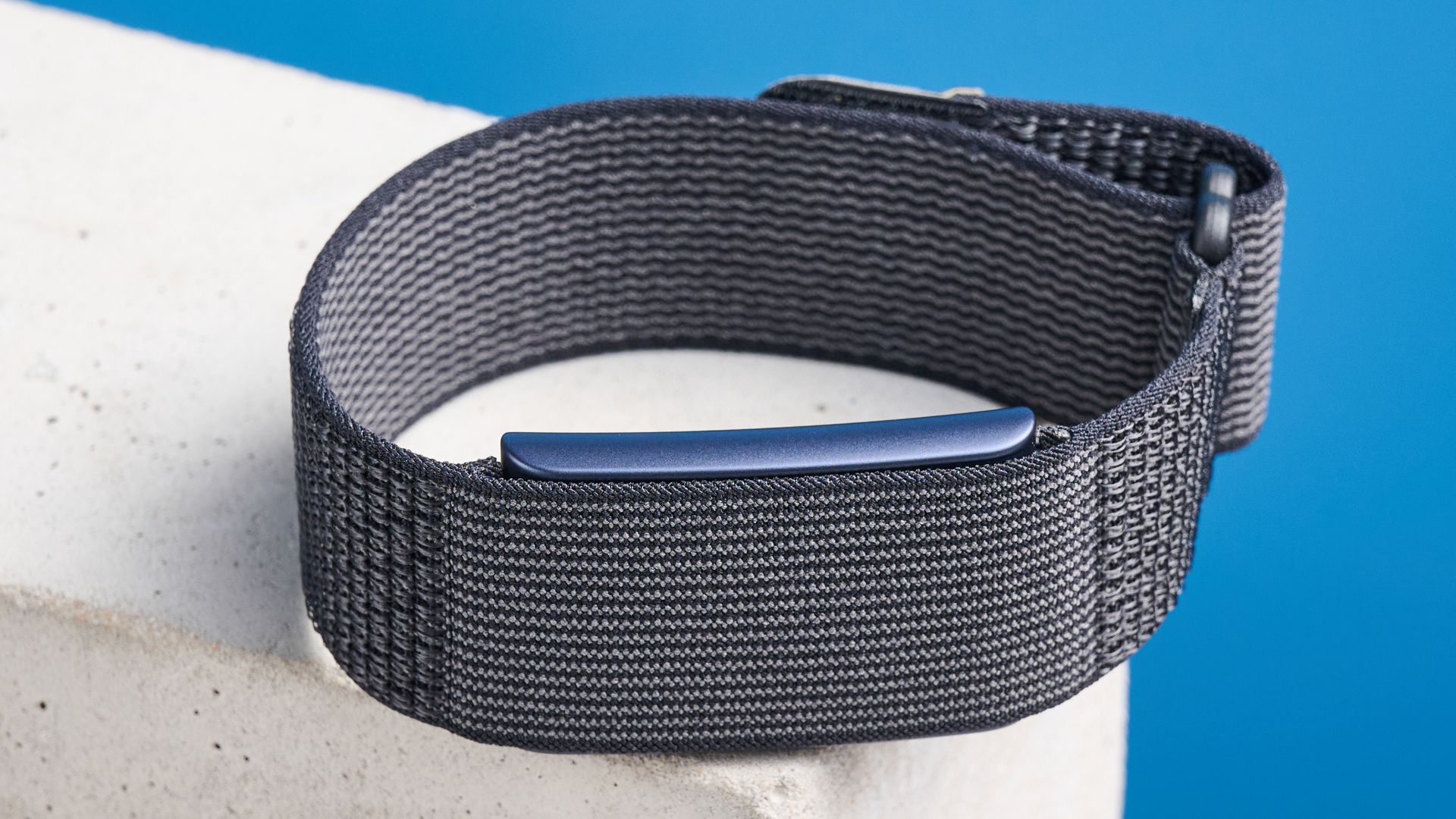
If you’re guilty of checking your Apple Watch or Fitbit like you’d check your cellphone, this is definitely the type of device for you. While I missed being able to quickly check the time, I really enjoyed using the screen-free Helio Strap.
I found myself getting more involved with my workouts: I wasn’t checking my watch to see my running pace or checking the time during yoga classes. I was immersed in the activity rather than checking my performance metrics. This is a welcome reprieve from the information overload I find with other fitness trackers.
I’ve tested the Amazfit Band 7 (Fitbit dupe) and the Amazfit Bip 5 (Apple/Samsung Watch dupe), but I think the Helio Strap is now my go-to fitness tracker. This is the device I want to use for the foreseeable future.
Amazfit Helio Strap review: Fitness features
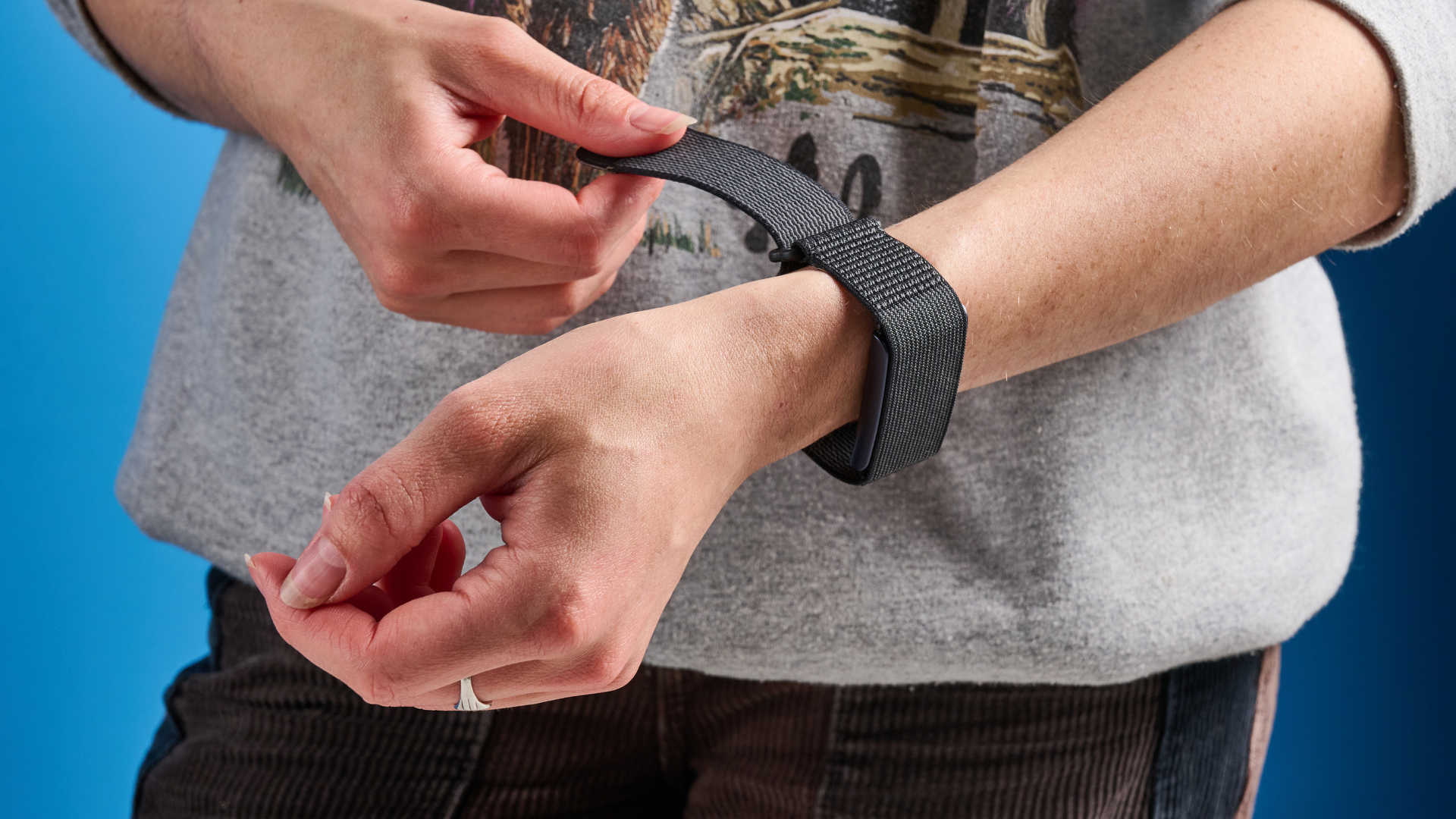
Even though I loved most of the fitness tracking features, I’ll discuss my primary issue with the Helio Strap first.
Unfortunately, the automatic workout detection on Helio Strap is extremely unreliable. To exemplify my point, let me just set the scene. I cycle to and from my yoga class. These cycle rides aren’t long: perhaps seven minutes in each direction. On the way to the yoga studio, there’s a short-but-steep ascent, and obviously a short-but-steep descent on the way back.
Guess which part of my yoga class the Helio Strap recorded as a workout? If you guessed the cycle rides to and from the gym, then you’d be correct. My phone pinged me with a “Workout detected!” notification for both cycles, but when I looked for a third activity, I was quickly disappointed. My entire yoga class was lost forever.
I learned my lesson and manually started workouts from my phone for the rest of my testing period. I tracked a yoga class perfectly by manually starting my workout, and this provided a fantastic heart rate analysis post-class.
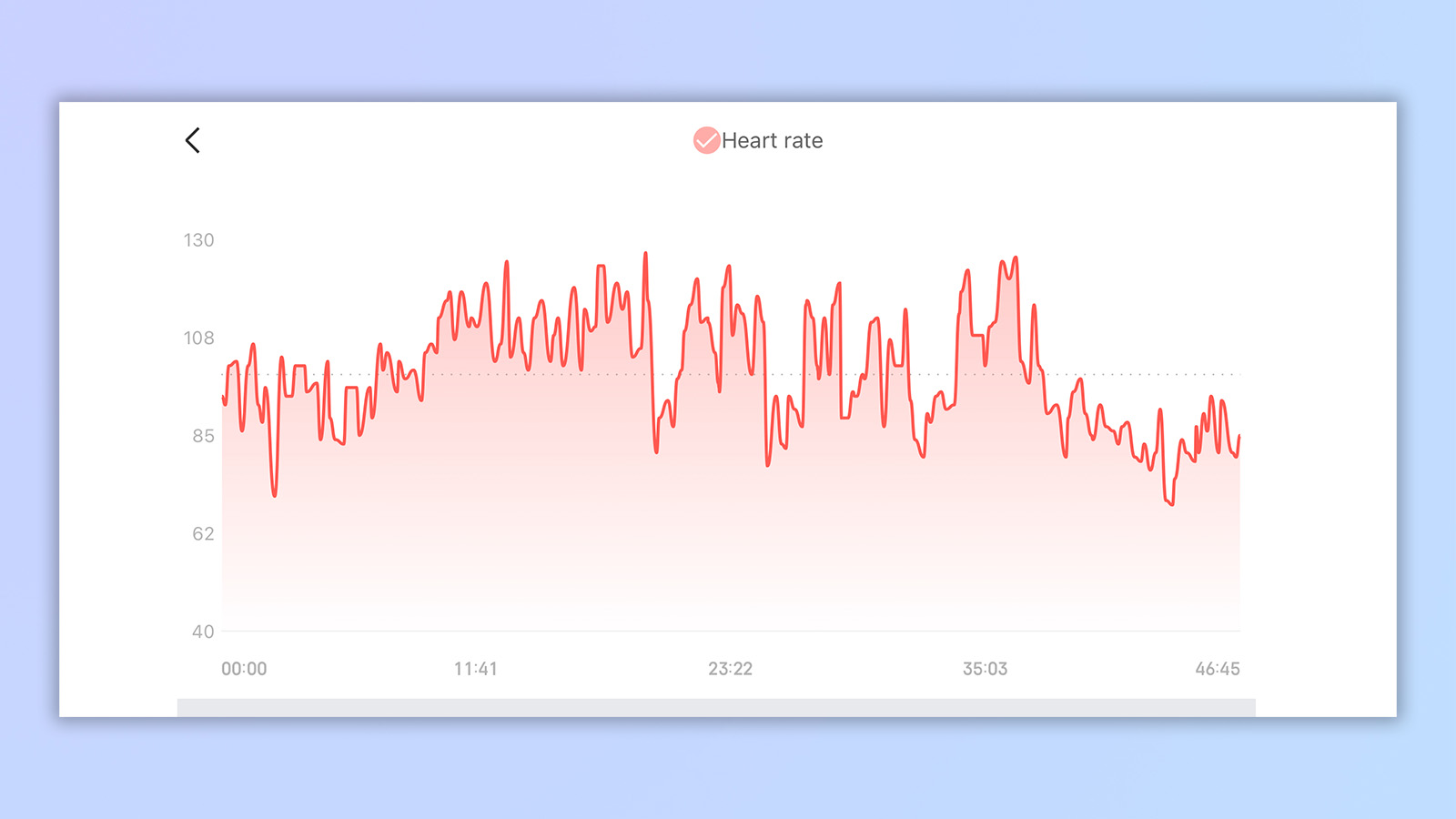
Outside of yoga classes (and accidental bike workouts), I also wore the Helio Strap on a 5 ½ mile hike. Even though I knew this hike would elevate my heart rate, I wanted to be sure the activity would be tracked, so I manually set up a workout on my phone.
The Helio Strap tracked the hike well, but it didn’t automatically end the workout when I got in the car. I thought the watch would pause the workout when it registered that I’d stopped walking; however, upon arrival home, I noticed that my workout spanned a suspiciously long distance, with a suspiciously high top speed of 57 miles per hour.
I very quickly realized that the Helio Strap had — bizarrely — considered my drive home as part of the workout. Thankfully, you can edit the workouts afterwards, so I just cut the last 30 minutes off the activity, and things went back to normal.
I hope that Amazfit rectifies this with the Helio Strap 2, or even patches it in for the current model. Surely if the watch detects a sudden jump in speed and distance (with no steps), it should assume the walk is over?
However, when the workouts were tracked accurately, I was really impressed with the Helio Strap’s data. Going forward, I will only ever manually start activities from my phone, as this resulted in accurate tracking.
I’ll discuss the app more in the "App" section below, but here are a few screenshots to show what I’m talking about.
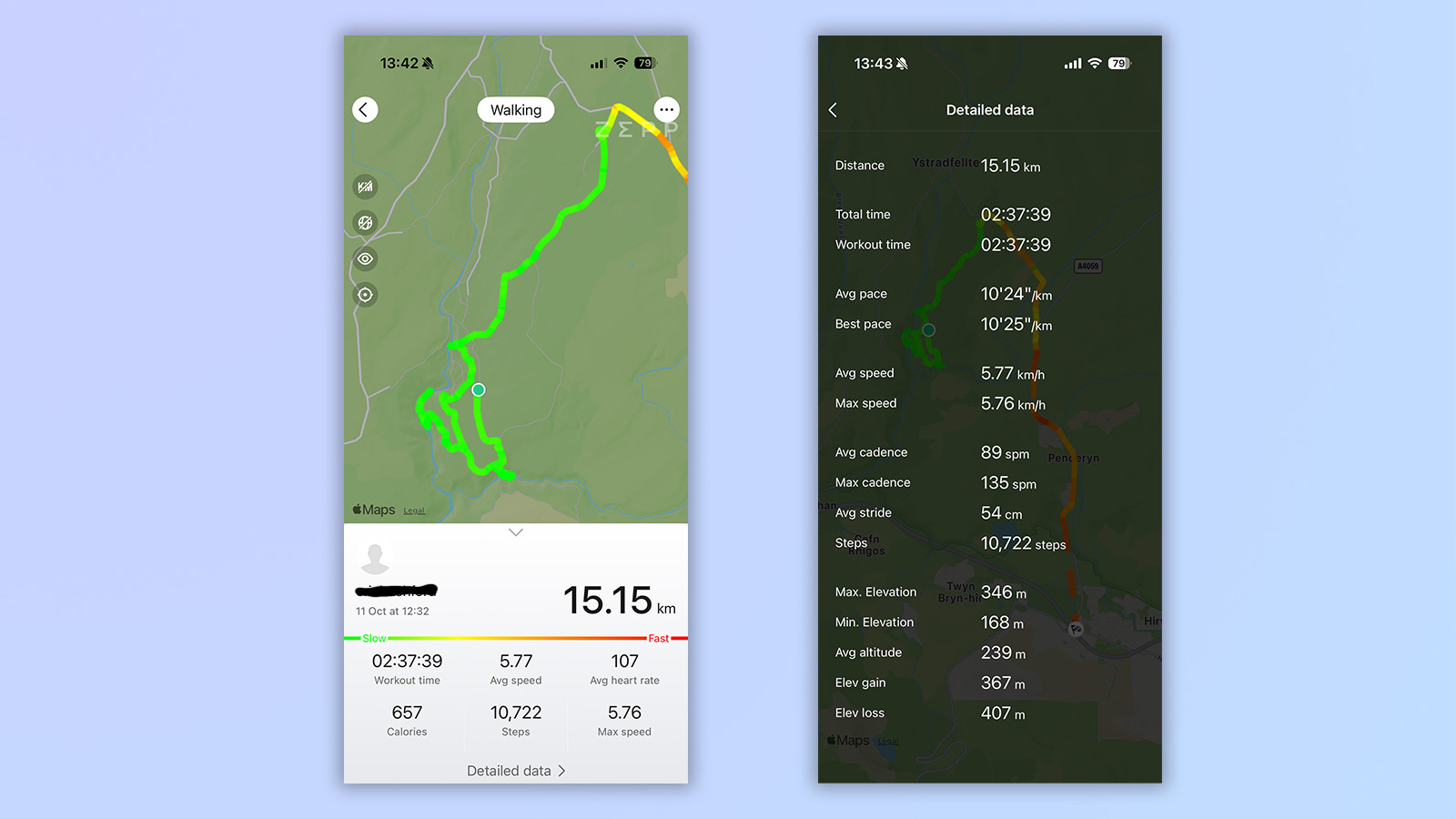
The Helio Strap itself doesn’t have GPS, so the map you’re seeing is taking GPS information from my phone. Also, even though I edited the workout to exclude the drive, it’s still visible on this GPS map. I just ignore the portion in red. (Red = fast. Green = slow.) Contrary to popular belief, I cannot actually walk at 57mph.
As you can see from the second screenshot, the Helio Strap tracks fitness metrics like pace, speed, cadence, and stride length. These are all great features for runners and serious hikers, and I enjoyed comparing them to my fitness metrics from the Band 7. For example, I can see that my average cadence has increased since last September.
If you manually start activities in the app, then the Helio Strap is a fantastic fitness tracker that will supply you with a whole range of metrics to study. If you rely on the automatic workout detection, though, you will likely be confused and irritated by its unreliable tracking.
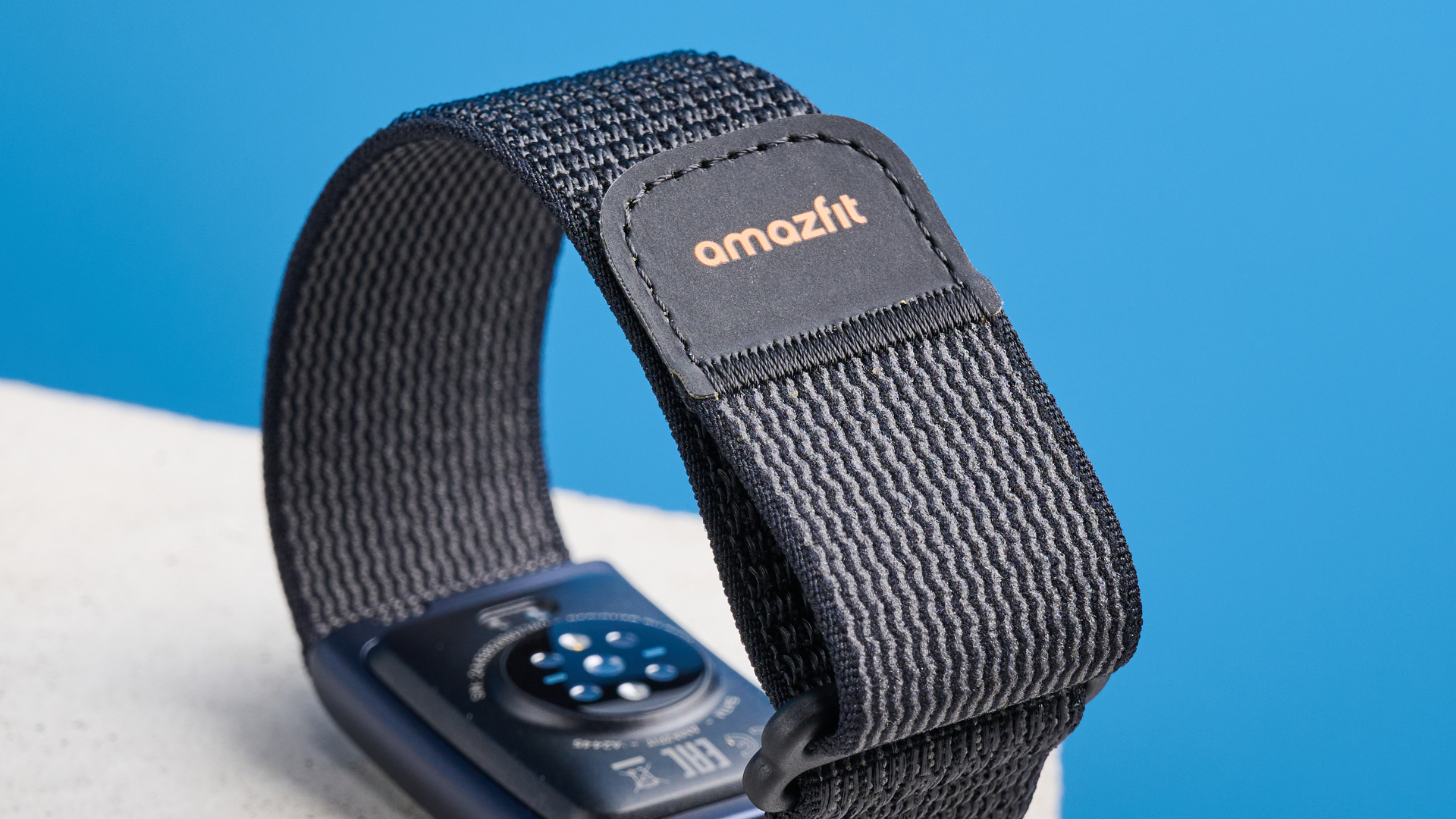
As with other Amazfit models I’ve tested, the Helio Strap has a PAI feature. This is basically Amazfit’s proprietary “fitness level” monitor. You want to aim for a score of 100, as this means you do a high level of intense cardio. Your PAI goes up if you do high-intensity activities, and goes down if you don’t.
I don’t really do that — I hate running and mostly do yoga, cycling, and hiking — so my PAI level is only around 30-50. Even so, the Zepp app is helpful and tells you what you need to do to get to the next PAI level. For example, right now, I need to run for 12 minutes to get to 50 PAI for this week.
I do like this feature as it gives you something manageable to work towards. It’s much more digestible than an app telling you to work out: the Zepp app is telling me what I need to do and exactly how long for. Hey, you never know, maybe I will go for that 12-minute run after finishing writing this.
Amazfit Helio Strap review: Extra features
Although it’s primarily a fitness tracker, the Helio Strap, of course, has extra features. The most important are "Sleep" and "Biocharge", so I’ll discuss those primarily.
Sleep
Of all the Amazfit devices I’ve tested, the Helio Strap has the best sleep tracking. The Band 7 — which I still love, don’t get me wrong — struggled to track my brief wakeups during the night. The Helio Strap catches all of these wakeups, even when they’re only a minute or so long. When I was using Band 7, I would check my sleep graph in the morning after waking up once or twice during the night. I was then disappointed when my sleep record didn’t note any brief wakeups.
Here’s a screenshot of my sleep to show what I mean.
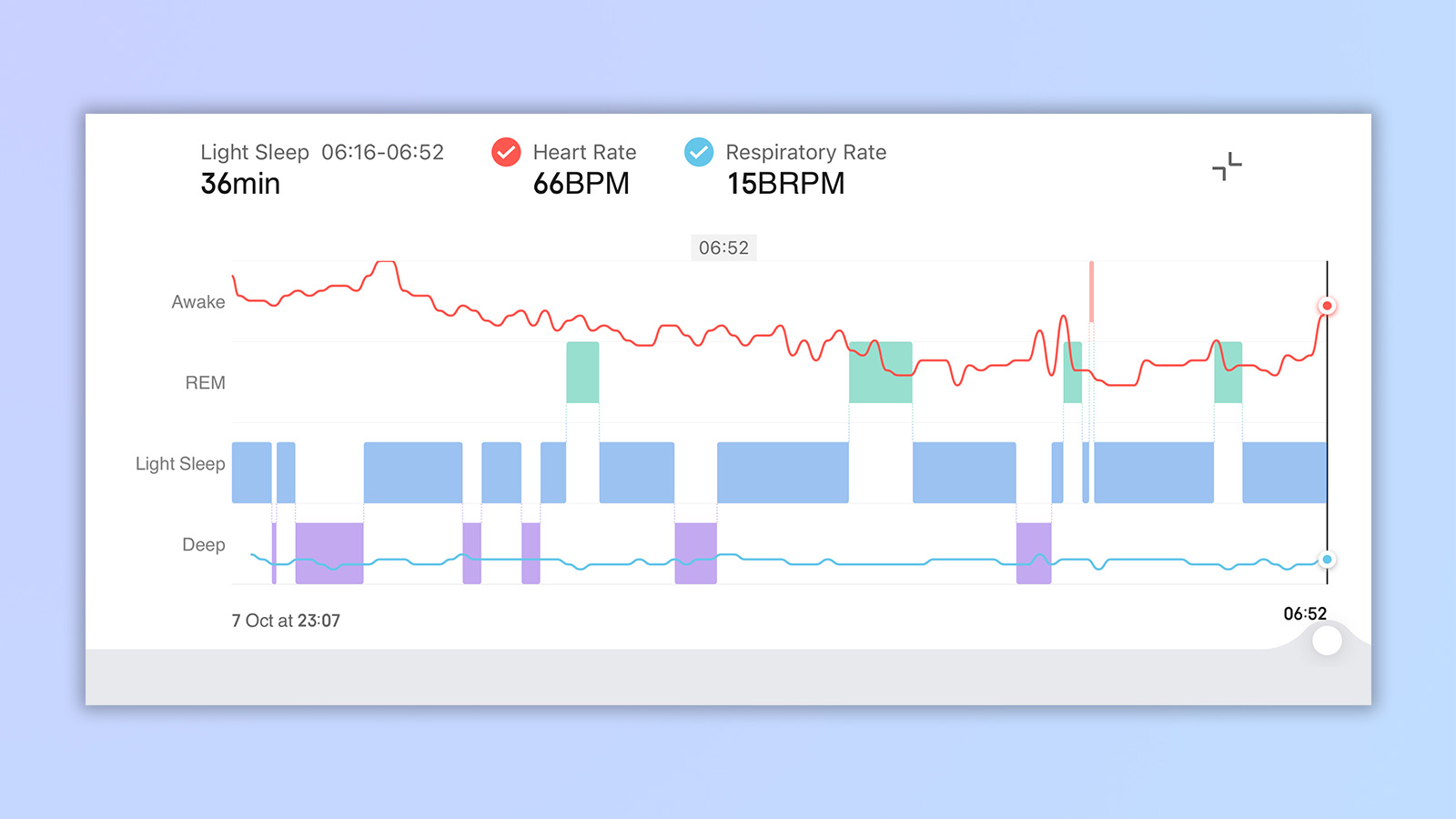
The Helio Strap tracks sleep apnea risk as well as heart rate and breaths per minute. This is a great feature if you’re worried about sleep apnea.
Biocharge
Biocharge is new for the Amazfit Helio Strap and the Balance 2 smartwatch, which both came out this year (2025). It works like Whoop’s recovery or readiness metrics you might be used to.
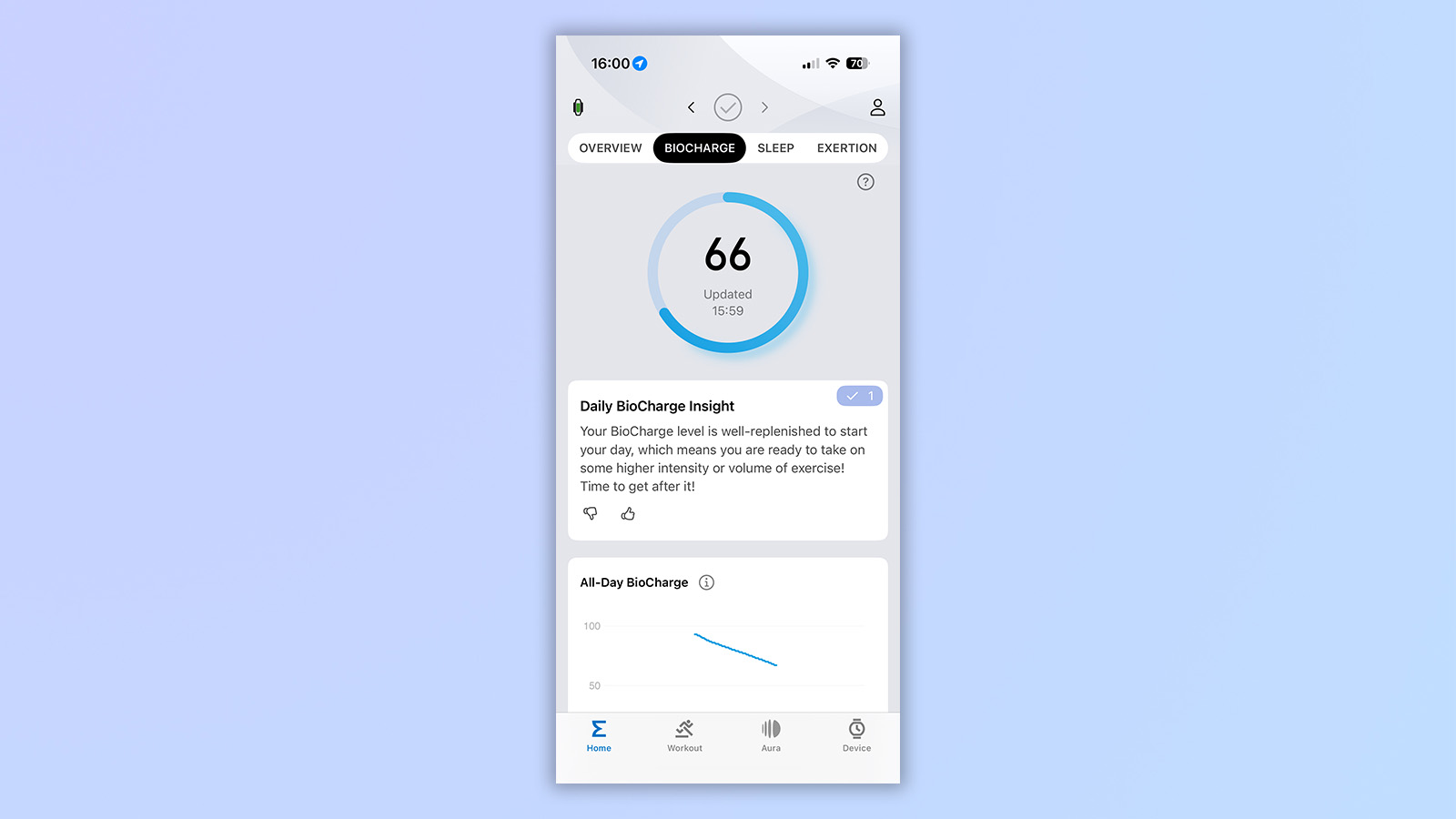
This is what Biocharge looks like. When I woke up, my Biocharge read 93, so by the time I took this screenshot at 4 pm, my Biocharge had dropped by 27. I didn’t do any exercise between 8 am-4 pm today, so this shows my exertion while undertaking day-to-day tasks.
Here’s a screenshot of my Biocharge later that day, after I did some activity.
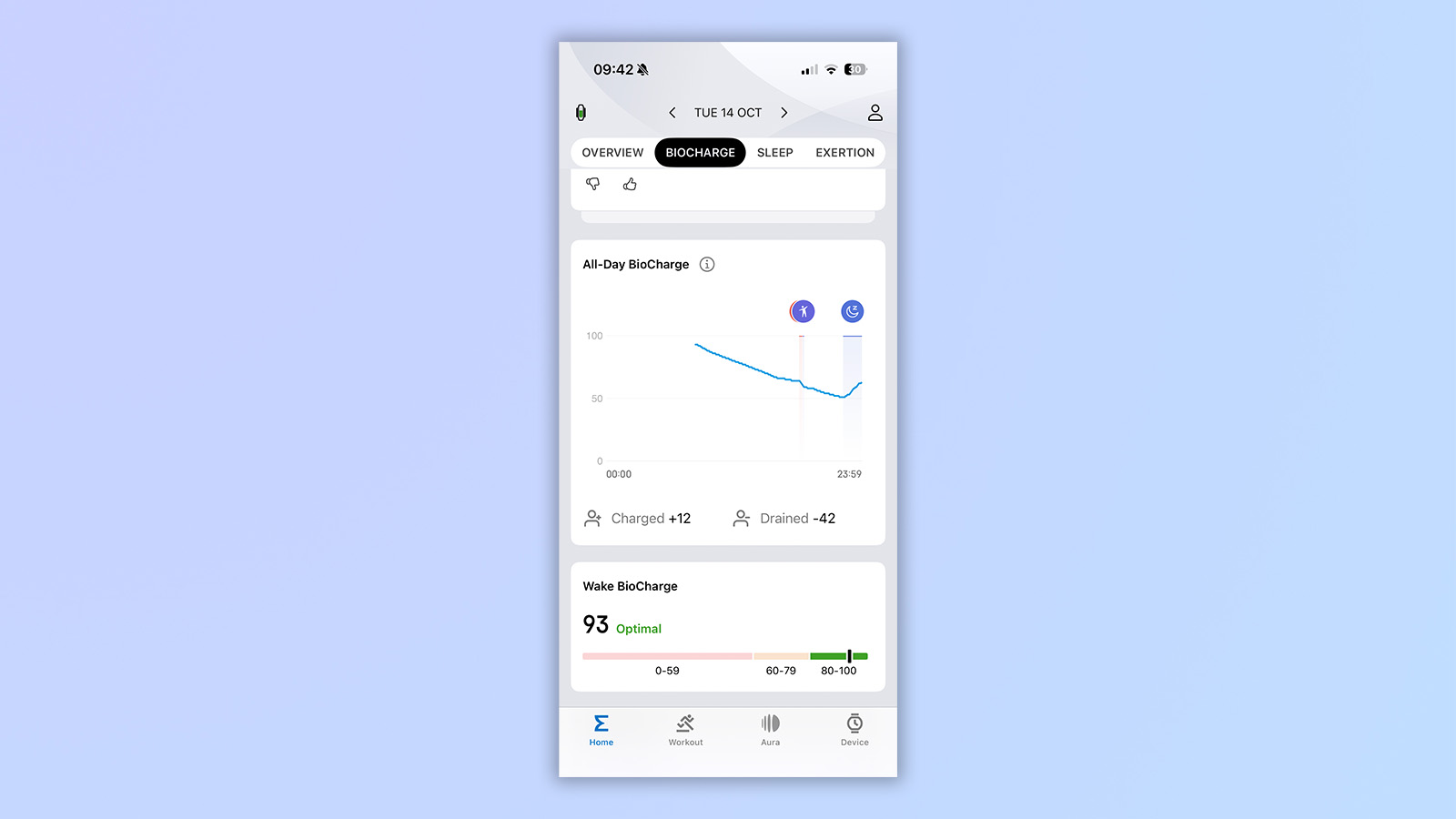
You can see where my Biocharge dipped dramatically during my run, and then slowly rebuilt itself while I slept. Interestingly enough, the next day I went on a 4-mile walk, and my Biocharge dropped more than the day I went running.
There’s also an "Exertion" tab, which is like Biocharge, but also not. Exertion takes Biocharge, readiness, and training into account and generates an overall exertion score. The lower your percentage, the readier you are for intense workouts.
For example, after I went on a 5 ½ mile hike, my fatigue level rose to 19, and my exertion increased to 100%. I felt perfectly ready to go on another 5 ½ mile hike, but my watch said otherwise, so I had to listen to it and put my feet up the next day (I know, how awful).
Amazfit Helio Strap review: App
As with other Amazfit products, the Helio Strap runs off the Zepp app. I actually really like this app: it’s easy to navigate, well-designed, and has a huge array of features. There are four tabs at the top of the screen: Overview, Biocharge, Sleep, and Exertion.
Biocharge is new for the Helio Strap, as the Band 7 (which I’ve been using since August 2024) doesn’t have that feature. Here are a few screenshots of the app so you can see for yourself.
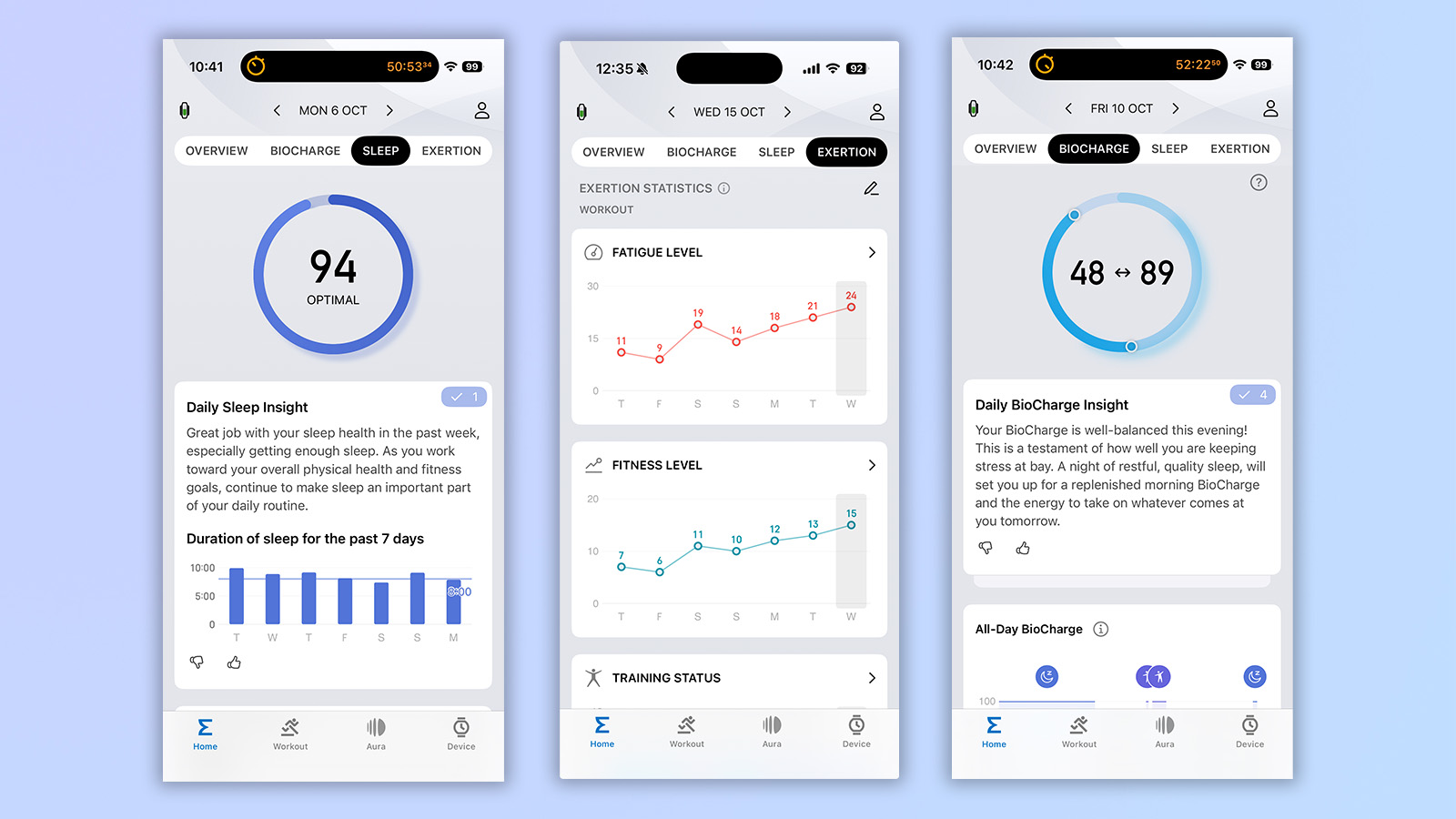
I’ve discussed the Zepp app throughout this review, but I’ll go over some features again. I love the PAI feature, as it provides actionable feedback to increase my fitness level. I also love sleep tracking, with the detailed sleep phase information, and I enjoy completing the "Bedtime Journal" section.
There’s also an "Exertion" tab that behaves kind of like the PAI feature. This tells you what activity you need to do to increase your fitness level. On top of this activity suggestion, there’s a "Fitness Level" graph that displays how fit it thinks you are. Obviously, this can never be entirely accurate (sometimes, I forget to wear my watch, for example), but it’s great to have this displayed visually.
Amazfit Helio Strap review: Battery life
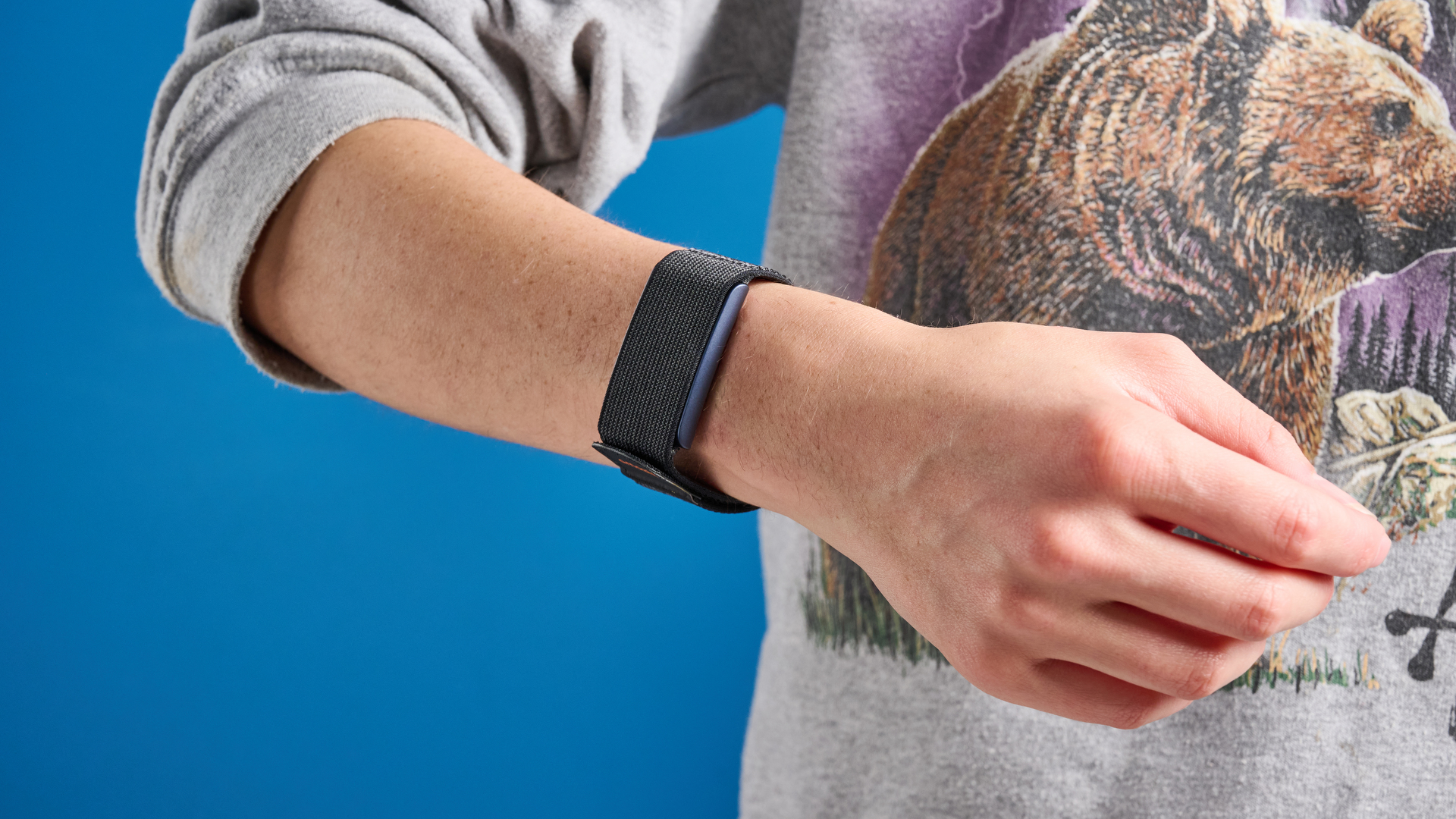
After 12 days of wear, I had to charge the Helio Strap. This is better than the listed 10-day battery life, but there were a couple of days when I forgot to wear the fitness tracker. As a result, I’d say the 10-day battery life is fairly accurate.
After these 12 days, I charged the Helio Strap. Although Amazfit doesn’t specify how long the watch takes to charge, mine was up to 100% in 1 hour and 49 minutes.
This battery life is worse than Amazfit’s other fitness trackers: the Band 7 can last for about three weeks. Whoop 4 is said to last for around five days, and Whoop 5 can go for 14 days.
If you’re comparing it to smartwatches and fitness trackers with screens, the Helio Strap’s battery life looks even better. Apple Watches famously tap out after about 18 hours. The Fitbit Charge 6 has a 7-day battery life, and the Samsung Galaxy Watch 8 has around a 30-hour battery life.
Should you buy the Amazfit Helio Strap?
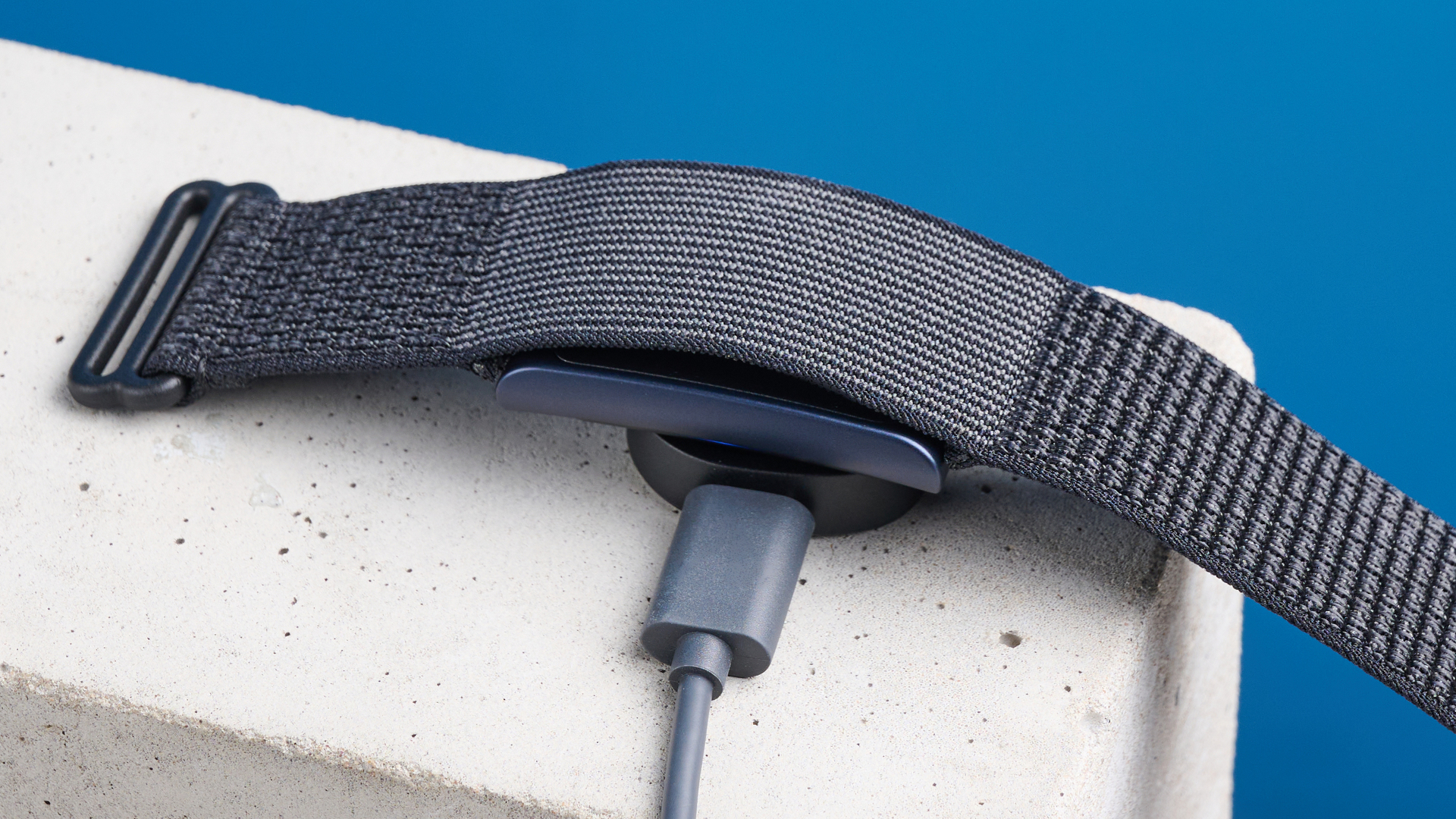
In a nutshell, yes. 100% yes. The Helio Strap is a fantastic wearable that will be strapped to my wrist for the foreseeable future. I go to bed excited to see my sleep score for the following day. Now that I know not to rely on the automatic workout detection, I track all of my activities successfully.
Of course, the Helio Strap isn’t perfect — it’s a $99 product competing with $300+ products — but it’s great value. No other screen-free wearables come close for this price.
If, like me, you hate subscriptions with every fiber of your being, you need to get the Amazfit Helio Strap. I love having it on my wrist, and I’m sure you will too.







